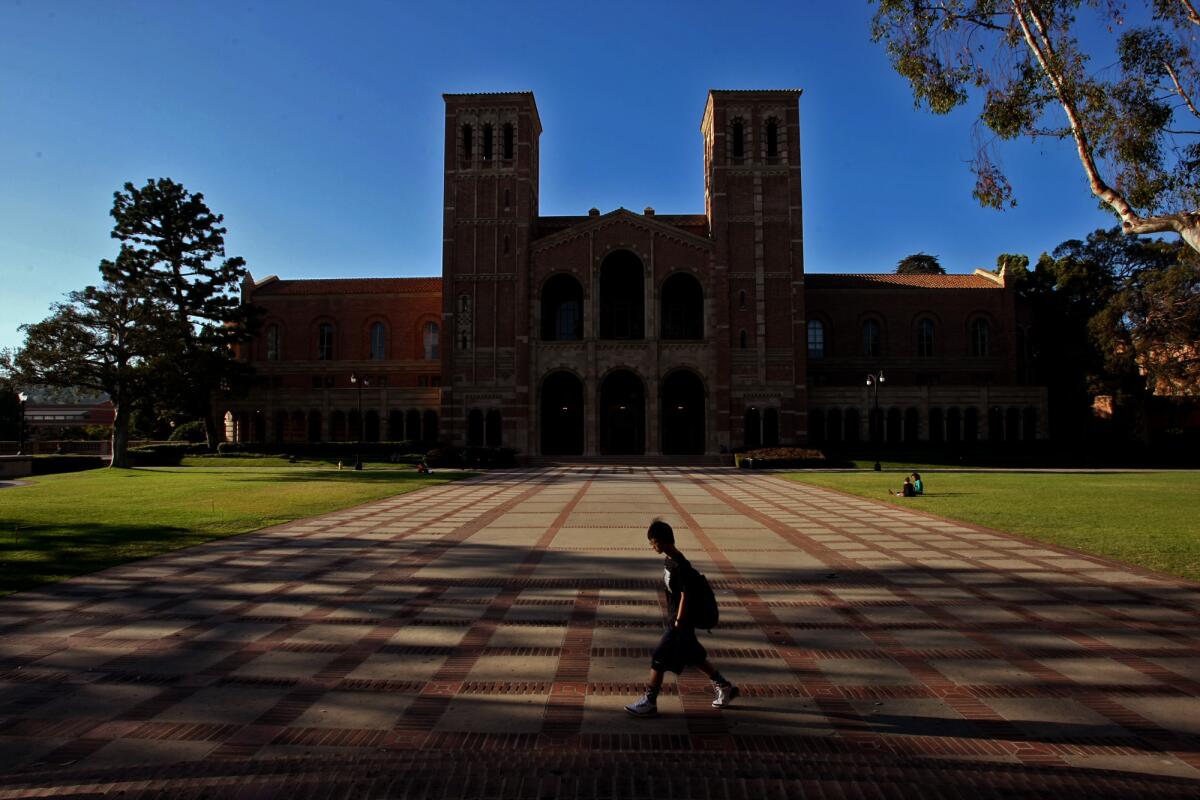Obama’s free education proposal: Why stop at community colleges?

- Share via
President Obama’s proposal unveiled Thursday to provide free community college education to all “responsible” students is garnering immense attention. That’s as it should be, although the details still need to be fleshed out and individual states will have to agree to shoulder a share of the costs.
But the proposal fails to address one glaring flaw in the nation’s overall system of public higher education: It should all be free. That’s the way it is in Germany, for instance, where there is a long tradition of low-cost university study. In 2014 the last German state holding out against free university education threw in the towel; now anyone, including foreign students, can study at a German university at public expense.
Free higher education to qualified students was also the rule in California, where the University of California had no tuition for state residents until Gov. Ronald Reagan demanded it in the early 1970s. Once the door was cracked open for tuition charges, it swung wide; a Berkeley or UCLA education was pegged at $12,192 for state residents in 2014-15, plus myriad other fees.
Some other American university systems were known for tuition-free education, notably the City University of New York, which maintained the policy until the New York fiscal crisis of 1976.
Free tuition has since come to be viewed as an anachronism, charming to contemplate in the abstract but simply incompatible with modern life. But the numbers don’t support that conclusion. The real obstacle to reinstating it is that it represents a path to social mobility for the working class and the poor--that’s the aspect that’s anachronistic in our grasping modern world.
Consider this: When the corporate plutocrat Meg Whitman was running for California governor in 2010, she had no trouble proposing the elimination of the state’s capital gains tax, which brought in more than $10 billion in a decent year. Eliminating all in-state tuition, according to a UC report issued around the same time, would have cost only $3 billion.
Which option would be an investment yielding a greater, broader return to the state? Unmistakably the latter. The roll of distinguished Californians educated for free at UC before the 1970s is a long one. It includes former Governor and U.S. Chief Justice Earl Warren; Ralph Bunche (the first black Nobel Peace Prize laureate); author Maxine Hong Kingston; the discoverer of plutonium (and later Berkeley chancellor) Glenn Seaborg; and Los Angeles Mayor Tom Bradley.
The principle of free higher education for qualified California residents persisted through the 1960s, undergirded by the landmark 1960 higher education master plan. The plan quoted one leading public university advocate as dismissing the idea of public university tuition as “an incomprehensible repudiation of the whole philosophy of a successful democracy premised upon an educated citizenry. It negates the whole concept of wide-spread educational opportunity made possible by the state university idea. It conceives college training as a personal investment for profit instead of a social investment... A betrayal of the ‘American Dream’ of equal opportunity.”
That was true then, and it’s still true. One commonly hears economists and political leaders on the left and right alike citing the importance of education in allaying income inequality in America. But as long as they refuse to make the needed public financial commitment, they’re just paying lip service to the idea.
California’s withdrawal from the duty of providing affordable higher education to its younger generation has become so extreme that it doesn’t even pretend to operate UC for its own residents anymore. Sacramento’s contribution to the UC budget reached 11% in 2012, a level that had been falling for two decades.
The slack was taken up by tuition, and especially tuition from out-of-staters, who pay through the nose. The current year’s entering freshman class at UC overall is 20% nonresidents; at the system’s elite campuses, UC Berkeley, UCLA and UC San Diego, the ratio is closer to 30%. That’s some investment in our own future.
Obama’s free-education proposal may reinvigorate the debate over public financing of higher education, but its implications--and its acceptance by the states--aren’t yet clear. In outline, the idea is to pay for two years of community college for students who attend at least half-time and maintain a 2.5 GPA. The feds will cover three-quarters of the “average cost of community college,” but individual states have to commit to pay the rest. That’s the least they should do--the very least.
Keep up to date with the Economy Hub. Follow @hiltzikm on Twitter, see our Facebook page, or email mhiltzik@latimes.com.
More to Read
Inside the business of entertainment
The Wide Shot brings you news, analysis and insights on everything from streaming wars to production — and what it all means for the future.
You may occasionally receive promotional content from the Los Angeles Times.











